 |

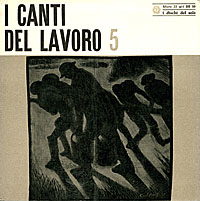 E lé la va ‘n filanda
E lé la va ‘n filanda


 U Canada è bellu
U Canada è bellu
|
Immigration of Knowledge and Expertise
The vast majority of Italians who immigrated to Canada came from
small towns and villages with populations of less than 10,000,
typical of Italy's rural areas.
Peasants and artisans for the most part, they brought with them
a wide variety of trades and expertise: agricultural knowledge;
expertise in working with metals, wood, stone or textiles; and
experience in industrial work acquired through emigration elsewhere.
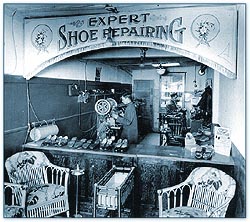 |
 |
Luca Carloni's Canadian Shoe Shine and
Repair Shop, 8th Avenue, Calgary,
Alberta, 1929
Source: © Antonio Valerio |
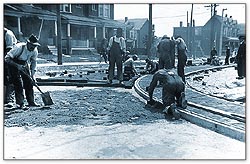 |
Laying curved track on Lappin Avenue and Dufferin
Street, Toronto, Ontario, August 1915
Source: © City of Toronto Archives |
Given this professional versatility, Italian workers were able to
take advantage of the employment opportunities offered by the Canadian
labour market, although they often lacked job security and worked
under difficult conditions, especially in their early years in Canada.
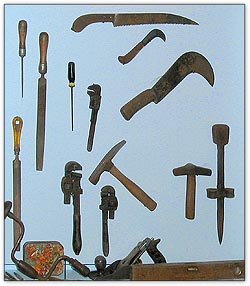 |
 |
Tools brought from Italy to Canada
These tools belong to Mr. Arduino Dino Rossi, who arrived in Canada in
1956. He brought them from Italy, ready to do whatever work was available.
Trained as a metal worker, he found employment in his field, as well as
in landscaping, machining and the terrazzo industry. |
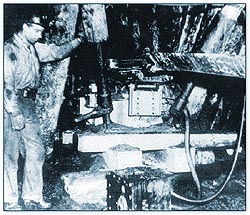 |
 |
Zupido D'Amico working in a coal mine, Nordegg, Alberta, 1940s
Source: © Courtesy of Anne (McMullen) Belliveau, author of Small Moments in Time: The Story of Alberta's Big West Country, 1999 |
From the late nineteenth century to the 1930s, and again in the
1950s, many Italians worked in sectors such as forestry, mining,
and the construction of railways, roads and canals. As Canada's
cities grew, however, they attracted an increasing number of Italian
immigrants, who found work in the construction of urban infrastructures
(roads, sidewalks, sewers, tunnels, streetcar lines, etc.), homes
and public buildings, the steel industry and manufacturing,
especially the garment and textile industries.
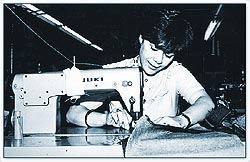 |
 |
Italian-Canadian woman working in a factory, Montreal, Quebec, c. 1970
Source: © Casa d'Italia, Montreal, Quebec |
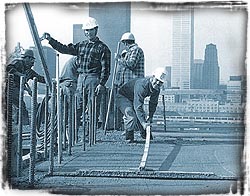 |
Construction workers pouring cement on the
14th floor of the Harbour Castle Hotel, on the
Toronto waterfront, 1973
Photo: © Vincenzo Pietropaolo |
The creation of Little
Italies also expanded employment and business opportunities in the
service and commercial sectors. This urban shift in employment
increased after 1945 due to the unprecedented growth of several
Canadian cities.
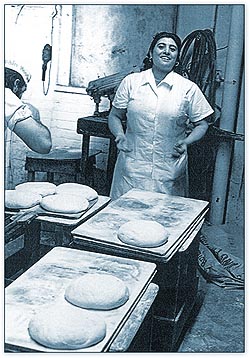 |
 |
Woman working at the Crupi brothers
bakery on Dundas Street West,
Toronto, Ontario, 1972
Photo: © Vincenzo Pietropaolo |
|
 |
 |